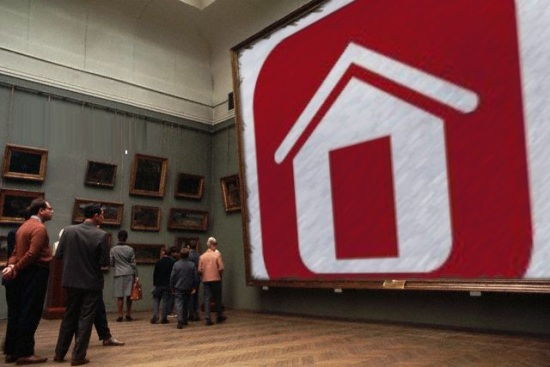It is now ten years since a former industrial property on the south bank of the Tyne was transformed into a shiny temple of modern art. Since Gateshead’s Baltic gallery opened its doors others have followed in regional locations from Middlesbrough to Margate. These developments have certainly created a stir in the London-centric art world but have they succeeded in boosting the economy of their home towns?

The Baltic stands as a monument to the post-industrial transformation of Tyneside and was the first example in the UK of a strategy to make cultural investment the key to urban regeneration. The belief was that the venue could have the same impact on Gateshead as the Guggenheim had on the Spanish port of Bilbao in 1997.
Today the Baltic attracts 400,000 visitors a year and its success has led to a number of new commercial property developments in the shadow of the gallery. Director Godfrey Worsdale claims that, while the Baltic and other cultural venues in the region cost the council around £20 million a year to run, the return to the local economy is estimated to be around £80 million.
He said; “So it’s a massive injection of resource into the regional economy and that has obviously created very significant numbers of opportunities for the local population.”
Following the success of the Baltic, other towns and cities have sought to transform the urban landscape with similar cultural developments. These include the Middlesbrough Institute of Modern Art (Mima), the Hepworth in Wakefield and Turner Contemporary in Margate. This gallery building boom is believed to have cost around £195 million but has it been money well spent?
Middlesbrough’s Mima has been open for five years and has earned a considerable reputation in the art world but it appears it is not so highly regarded locally. Surrounded by old offices and empty shops it has clearly not led to the commercial property development seen in Gateshead.
Asked by the BBC what impact Mima has had on the town a local woman replied; “It’s neither here nor there. I suppose it’s something nice to look at in the middle of this mess.” Another described it as a “waste of money” while others claimed to have no interest in modern art.
However, founder Tony Charles says the gallery is part of the “creative maturing process” of the town and that it proves the council is open to bold ideas.
One of the latest galleries to open its doors is the Hepworth in Wakefield which attracted 500,000 visitors during its first year. It is thought that, on average, each of the Hepworth’s visitors spends around £20 in local commercial properties, such as sandwich shops and coffee bars, contributing £10 million to the regional economy.
So, on the whole, it seems these high profile galleries have had a positive effect on their local economies, even if Mima is yet to realise its potential. However, these developments are likely to be the last of their kind for some time to come. In the current economic climate funding is being squeezed and Arts Council England has decided to focus its attention on improving existing cultural facilities.
An art gallery or art museum is a building or space for the exhibition of art, usually visual art. Museums can be public or private, but what distinguishes a museum is the ownership of a collection. Paintings are the most commonly displayed art objects; however, sculpture, decorative arts, furniture, textiles, costume, drawings, pastels, watercolors, collages, prints, artists’ books, photographs, and installation art are also regularly shown.`